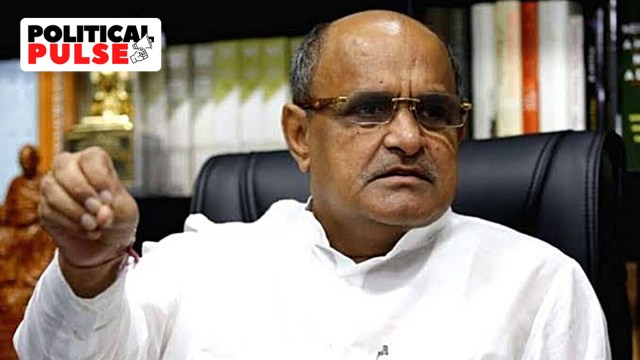The Janata Dal (United), which emerged as the third largest constituent of the NDA following the Lok Sabha polls, with 12 MPs, is now strengthening its base in Uttar Pradesh for the 2027 Assembly polls and in Jharkhand, where state elections are scheduled for later this year, to “strengthen the NDA”.
JD(U) national spokesperson K C Tyagi said the party wants to give the NDA a fillip by expanding its footprint. “We have contested elections together in the past. In the 2020 Delhi Assembly elections, the BJP had left two seats for us. This time, we want to contest the Assembly polls in Jharkhand, Delhi and UP as a part of the NDA,” he said.

Tyagi said he hoped that the BJP can benefit from the JD(U) like it during the Atal Bihari Vajpayee era. “We hope the JD(U) is accommodated within the NDA in UP, especially in view of the new socio-political conditions of the state,” he said.
The JD(U) got down to work on June 6, two days after the Lok Sabha results, with the appointment of Anoop Patel as its new UP president and directed him to build party organisation in all districts across the state. Over the past week, the party has also appointed district presidents in Shahjahanpur, Badaun, Ghaziabad, Rampur, Mirzapur, Bhadohi and Ghazipur.
“The party aims to set up district units in the state over the next two months. While new presidents are being appointed in many places, a few existing presidents have been asked to continue,” Patel told The Indian Express.
The move assumes significance as it comes in the backdrop of the NDA’s sub-par performance in the recent Lok Sabha polls in UP, where the BJP’s tally fell from 62 in 2019 to 33, largely due to the shift of non-Yadav OBC votes towards the Samajwadi Party (SP)-Congress combine of the Opposition INDIA bloc. While the SP recorded its best-ever performance, winning 37 seats, the Congress, which won one seat in 2019, improved its tally to six.
The NDA in UP comprises the BJP and four parties – Anupriya Patel’s Apna Dal (Soneylal), Om Prakash Rajbhar’s Suheldev Bharatiya Samaj Party (SBSP), Jayant Chaudhary’s Rashtriya Lok Dal (RLD) and Nishad Party of Sanjay Nishad – which are seen to be influential among the OBCs.
Story continues below this ad
“In recent Lok Sabha polls, a significant chunk of the Kurmi votes shifted from the NDA to the SP-Congress combine. The BJP relied solely on the Apna Dal (Soneylal) for Kurmi votes. Had it given a couple of seats to the JD(U), the results would have been better,” a JD(U) leader said.
JD(U) workers and aspirants in the state have been asked to begin preparations for the Assembly polls. “The party wants to contest more than 50 seats in the state and I am meeting aspirants to ask them to start preparations for the polls,” Patel said and added the UP unit will request its central leadership to demand the Katehari seat in the Assembly bypolls, the dates for which are yet to be announced by Election Commission (EC).
The Katehari seat is among the 10 Assembly seats in the state which will see bypolls following the resignation of MLAs, who successfully contested the Lok Sabha polls. SP MLA Lalji Verma won the Ambedkar Nagar Lok Sabha seat, necessitating the bypoll. The party is keen to contest the Katehari seat as it is dominated by the Kurmis – seen to be the traditional voter base of the JD(U) as party supremo Nitish Kumar hails from the community.
Kurmi votes are seen to be decisive in several constituencies of eastern and central UP – where the Apna Dal (Soneylal) is seen as influential – and also in the Bundelkhand region. It is a landowning farming community whose status varies across regions in various states, including UP, Bihar, Odisha, Maharashtra, Gujarat, Chhattisgarh, Madhya Pradesh and Jharkhand. A social justice committee set up by then chief minister Rajnath Singh in June 2001 had estimated that OBCs constituted 43.13% of UP’s population, of which Kurmis constituted 7.46%.
Story continues below this ad
In the run-up to the Lok Sabha polls, the JD(U) was keen on fighting two seats – Jaunpur and Phulpur – in UP, but its requests were turned down by the BJP. “As the BJP did not seek our support or invite our workers to any campaign events, they moved to Bihar to work for JD(U) candidates there,” Patel said.
The party had also contested 27 seats in the 2022 UP Assembly polls after seat-sharing talks with the BJP broke down, but failed to open its account.
At its National Executive meeting in Delhi last month, the JD(U) passed a resolution to identify seats it wants to contest in advance in Jharkhand and lay special focus on them.

































